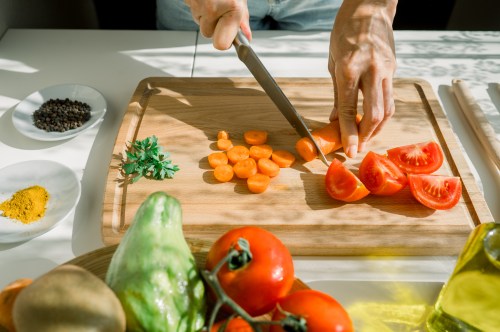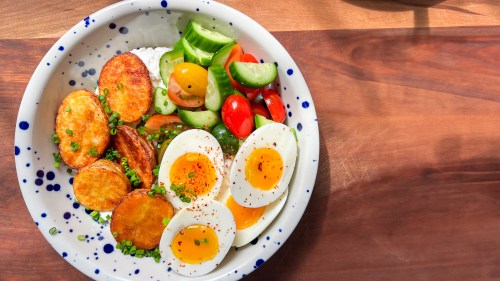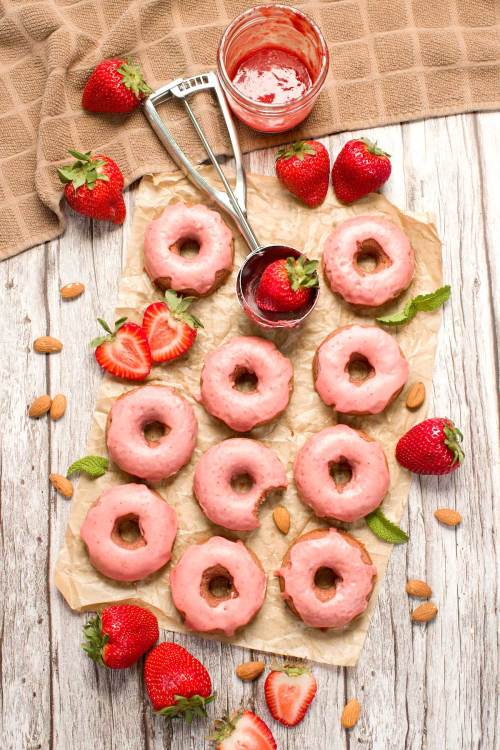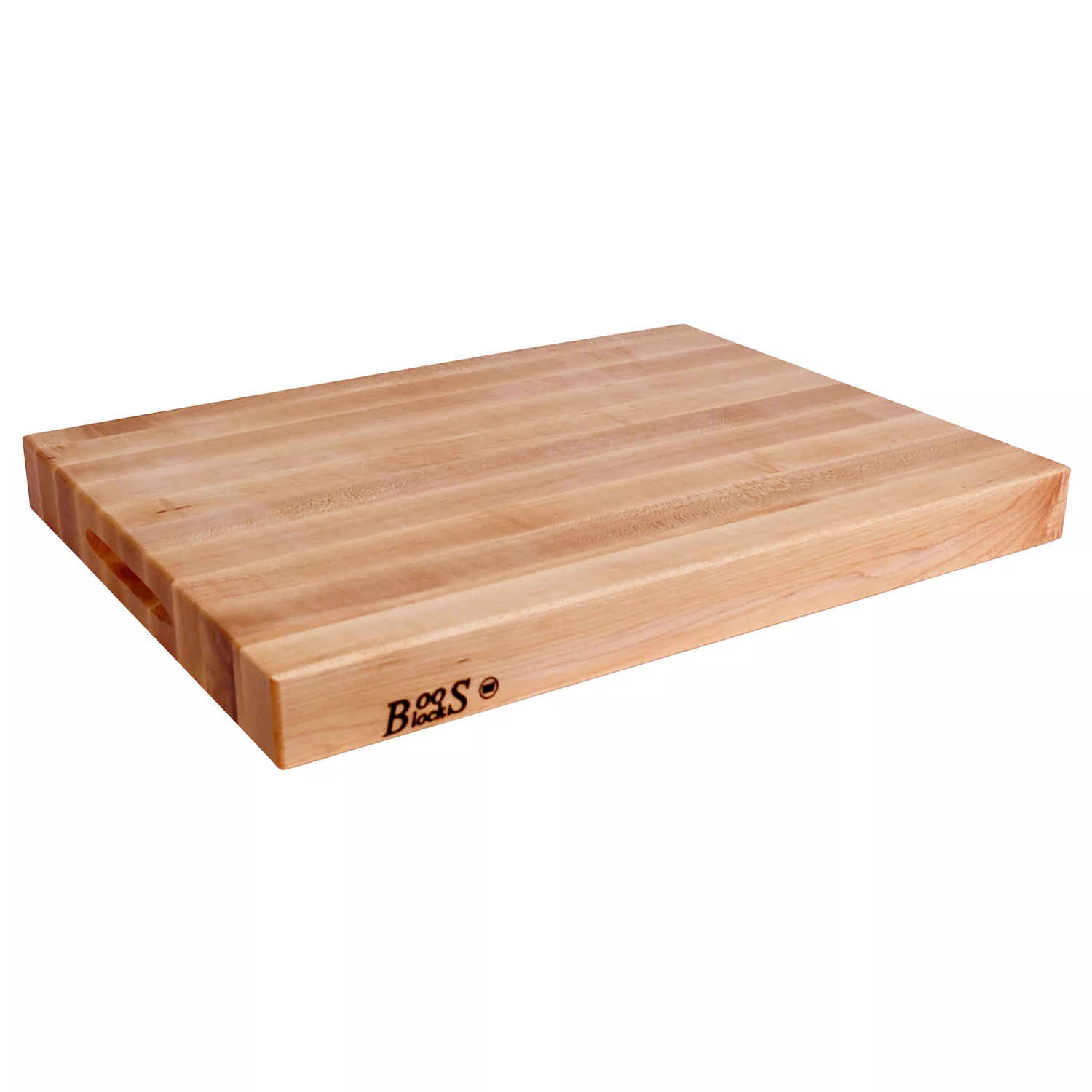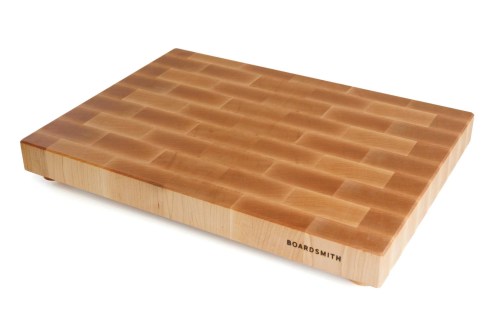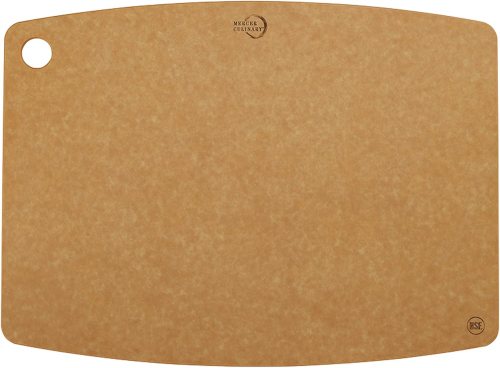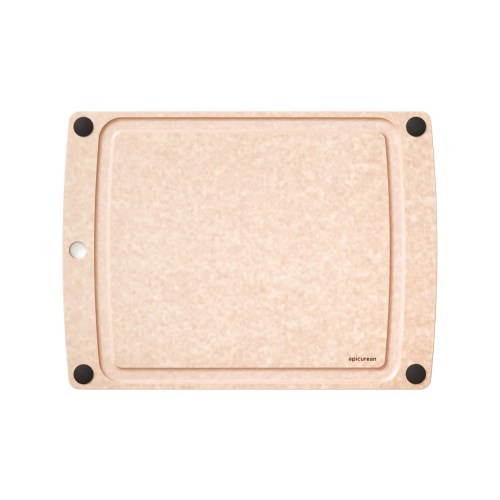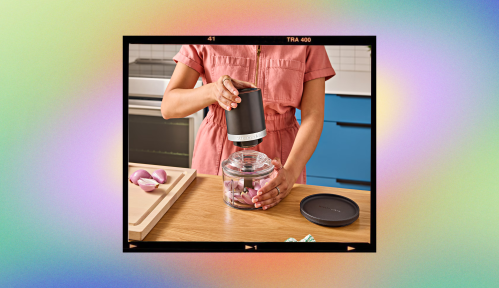Our editors independently select these products. Making a purchase through our links may earn Well+Good a commission
A good cutting board is an essential for home cooks and restaurant chefs alike. But with daily use, a well-loved cutting board is impacted by constant wear and tear and will, sadly, eventually need replacing. The U.S. Department of Agriculture (USDA) recommends replacing your cutting boards once they become excessively worn or develop hard-to-clean grooves, but how long a cutting board *truly* lasts comes down to what type of material it’s made from.
A good board should be sturdy enough to stand up to daily use, but not so hard that it dulls or damages your knife collection. Boards made from plastic, wood, and paper composite are generally considered knife-safe, whereas harder materials like glass or stone can wreak havoc on a sharp blade with just a few cuts.
No matter what material your board is made from, regular and thorough cleaning is essential to extending its lifespan. Dr. Joseph Zagorski, an assistant professor at Michigan State University’s Center for Research on Ingredient Safety, recommends scrubbing your board with hot soapy water after each use. “If an individual wants to sanitize a cutting board, a dilute chlorine bleach solution is sufficient,” he says. “Whether cleaning or sanitizing, be sure to liberally rinse the cutting board with clean, hot water, to rinse off any remaining soap or bleach residue.”
So, when should you replace that cutting board?
For plastic cutting boards:
Plastic boards are affordable, lightweight, and generally considered to be knife-friendly. The major downside to plastic cutting boards is that they don’t last very long. “A good rule of thumb is to replace plastic cutting boards yearly,” says Alycia Johnson, vice president of merchandising at kitchen supply store Sur la Table. “Plastic cutting boards should be replaced when deep cuts start appearing in the surface, as these grooves can harbor bacteria.”
Johnson recommends hand-washing your plastic cutting boards to help extend their lifespan, but notes that they can be run through the dishwasher if needed.
Plastic boards will also degrade over time, and tiny bits of plastic can make their way into your food. Meghan O’Kelley, executive chef at Seattle restaurant Ciudad, has a great tip for keeping tabs on the state of your plastic boards. “I definitely recommend using a brightly colored plastic cutting board over white/neutral– that way you can more easily see if particles of the board are starting to contaminate your food.”
For wood cutting boards:
A high quality wood cutting board may cost you well over a hundred dollars but with proper care and maintenance, it can last for years, if not decades. Not only are they gentler on knives, wood boards can also be maintained and repaired in ways that plastic boards can’t. “Minor imperfections like scratches and small nicks can often be sanded down and oiled, restoring the surface to a smooth finish,” explains Johnson.
If you want your wood board to last, never put it in the dishwasher. The high heat and prolonged exposure to moisture can cause the board to warp and crack. Instead, always hand wash a wooden cutting board before allowing it to dry completely.
“After you clean a wooden cutting board, make sure to thoroughly dry with a clean towel and leave it propped somewhere it can receive airflow,” says O’Kelley. “Most problems with bacteria, mold, and warping with wooden cutting boards come from incomplete drying of the material.”
To ensure your board lasts many years, rub it with a coat of food-grade mineral oil once a month or whenever it begins to look pale and dry. You’ll know it’s time to toss a wood board when it develops deep grooves that are difficult to clean or becomes warped in a way that makes it difficult to use. “When [wooden boards] truly give up the ghost,” says O’Kelley, “they are compostable.”
For paper composite boards:
Cutting boards made from paper composite have become increasingly popular in recent years. They’re lightweight, relatively affordable, and dishwasher-safe, plus they don’t require any regular maintenance. A paper composite board won’t last nearly as long as a quality wood board, but it will significantly outlast a board made from plastic.
Like any other cutting board, a composite board should be replaced when they develop deep grooves or cuts. “Or when it emits a strong odor when wet,” says Johnson, “as this can indicate bacteria buildup.”
A good cutting board is a safe cutting board
No matter what type of cutting board(s) you choose for your kitchen, food safety should remain your top priority. This can look like keeping a separate cutting board that's just for raw meat, or having a weekly cleaning routine you can easily implement in your household.
Remember that wear and tear doesn’t only affect the aesthetics of a cutting board, it’s also about cleanliness. “A damaged board can harbor bacteria and pose a risk to food safety,” explains Johnson. “Safety should be your priority.”
Sign Up for Our Daily Newsletter
Get all the latest in wellness, trends, food, fitness, beauty, and more delivered right to your inbox.
Got it, you've been added to our email list.
